So what’s the best approach to buying a new camera? Research, of course! So we’ve done that for you. And to help you, we compiled the best cameras for professional photography. so you can find the best option that meets your needs! The Nikon Z9 is our top pick. It has rock-solid performance, incredible AF, and some of the best lens options in the world. [Note: ExpertPhotography is supported by readers. Product links on ExpertPhotography are referral links. If you use one of these and buy something, we make a little bit of money. Need more info? See how it all works here.]
What is the Best Camera for Professional Photography?
Here’s our list of the 17 best cameras for professional photography. We provide an excellent range of camera brands in no particular order. There’s a mix of the best DSLR cameras and full frame mirrorless cameras with various sensor types. We also list a few general specs for you to consider. (You can jump to our buying guide at the end if you need more details on what camera features to look for.) Let’s have a look at those cameras in more detail, starting with our top pick, the Nikon Z9. Nikon has struggled for years to compete in the mirrorless world with Sony and Canon. Those two companies had a head start with mirrorless cameras. That’s why the Nikon Z9 is surprising to many. Nikon’s newest flagship professional camera blows the competition out of the water. The Z9 has groundbreaking features and image quality! So what makes the Z9 the best professional camera? Let’s start with the frame rate. Not long ago, many thought 24 fps was impressive. But the Z9 can shoot a whopping 120 fps in still photos. With autofocus, Nikon developed a deep learning algorithm. It tracks various subjects, from people and animals to vehicles. It even combines 3D tracking and subject detection, automatically following fast-moving objects. Of course, the Nikon Z9 is also a competent professional camera for video. It has a max video resolution of 8K. And what’s even more impressive? It can shoot 12-bit RAW footage in-camera without overheating. Its footage is so crisp that you can grab 33 MP still frames from it. The downside of the Z9 is that it’s a little bit on the bulky side. The body alone is 2.9 pounds. That’s a lot of weight considering it’s a full frame mirrorless camera. But then again, its robust build makes it a formidable professional camera. It can brave the elements well with its weather sealing. The Nikon Z7 II is the successor of the groundbreaking Z7, which Nikon released in 2018. The Z7 was an impressive mirrorless camera. It had a few inadequacies that some professional photographers didn’t like. For instance, it didn’t have a dual card slot. That would have allowed photographers to back up their files in-camera. Thankfully, Nikon listened to the consumers and addressed the inadequacies of the Z7. Now, the Z7 II has a dual card slot and boasts 4K / 60p video, albeit still cropped. This full frame mirrorless camera also allows accurate eye-tracking in video mode. This makes it a favorite among run-and-gun filmmakers. Of course, Nikon didn’t stop with the dual card slots and the 1.08x crop 4K. The Z7 II lets you combine up to ten multiple exposures into a single frame in-camera. And can go the traditional route of long exposure photography. It lets you keep the shutter open for up to 900 seconds for a single shot. You’ll also enjoy the Z7 II’s focus shift shooting if you’re into macro photography. It takes several photos and automatically adjusts focus incrementally each time. You can then edit and combine them into one sharp image from the foreground to the background. Most people these days dismiss DSLR cameras in favor of mirrorless options. But some photographers still love using an optical viewfinder. And others don’t want to sacrifice performance and quality. If you’re one of those people, you need to look at the Nikon D850. Nikon released this iconic DSLR camera in 2018. But it remains one of the best non-mirrorless options for professionals. It only has a mechanical viewing system. But it has features that make it highly competitive with high-end mirrorless cameras. First, the D850 has an excellent 45.7 MP resolution. That places it on the level with the Nikon Z7 II and the Z9. Its backside illuminated sensor lets you shoot in low light with minimal noise. It also doesn’t have a low-pass filter, allowing you to create tack-sharp images. Unlike the Nikon Z7 II that was released in 2020, the D850 can capture 4K video without a crop. Unfortunately, its autofocus in video mode is a bit slow. But if you like focusing manually, you wouldn’t have to worry about its slow autofocus in the first place. One true advantage of the D850 over mirrorless cameras is that it can accept older lenses without needing an adapter. Do you want a newer camera but don’t want to replace your DSLR glass? This professional camera is the most logical choice. We know that DSLR cameras are starting to feel a bit passe. But forget that the D850 has no optical viewfinder for a second. It’s still a capable camera. And it can beat most modern cameras when it comes to image quality. The Nikon D780 is a bit of an anomaly. Nikon’s competitors were releasing new mirrorless cameras in 2020. And the Japanese camera company decided to launch this full frame DSLR camera body. It may seem illogical for Nikon to have done that. But read on to find out why you might find this excellent camera indispensable. The Nikon D780 is the updated version of the much-loved Nikon D750 that was released in 2014. On the surface, it seems like a regular entry-level full frame camera. It has a standard 24 MP sensor. But the Nikon D780 is, in fact, a hybrid camera that has improved autofocus for video. If you own a DSLR, especially a Nikon one, you know how unusable the autofocus is when shooting video. It hunts for the subject a lot, and the transition from one focus point to the next is jerky. The Nikon D780 allows you to focus accurately and smoothly as if using a mirrorless camera. And the best part about it is that you can work with your existing DSLR lenses to use it. The D780 has upgraded video capabilities. But besides that, it has many photography features for the modern pro photographer. For instance, it has built-in creative filters. This includes a tilt-shift effect. Plus, it lets you combine many exposures in-camera. It also lets you create focus-stacking shots. That lets you create sharp photos from the background to the foreground. So what is the Nikon D780 for, then? It’s designed for professional photographers and serious enthusiasts. It’s for those who love the experience of a DSLR but long for the autofocus capabilities of mirrorless options. It may seem simple at first glance, but it’s proof that DSLR cameras still have plenty to offer. Canon cameras have long been a favorite among photojournalists, wildlife, and sports photographers. That’s due to their performance even in high-stress environments. The brand’s mirrorless camera release, the EOS R3, continues that tradition. But it has new features that make shooting photos faster and more intuitive. The Canon EOS R3 has an impressive 1,053 autofocus points. It can accurately detect all subjects, from humans to animals. It also has an Eye Control AF. It automatically selects the focus points by following your eye movements! Surprisingly enough, the Eye Control AF technology has been around since 1998. And it was available in some high-end film cameras. But this is the first time Canon has integrated it into a digital camera. We wonder why it took that long. But we’re excited about its potential. It makes changing focus hands-free and more intuitive. The Canon EOS R3 has 5-axis in-body image stabilization (IBIS). It steadies your camera while taking photos at low shutter speeds. This feature is perfect for those who always work in terrible lighting conditions. They can be photojournalists or even event photographers. When it comes to continuous shooting, using a mechanical shutter, the Canon EOS R3 can take 12 fps. And it takes up to 30 fps electronically. But, it can fire up to 195 frames in custom mode, beating Nikon’s Z9’s impressive 120 fps. Of course, we can’t forget this camera’s video features. It’s the perfect hybrid camera, capable of shooting 60 fps in 6K and 120 fps in 4K. And unlike most mirrorless options, the R3 has a suppressed rolling shutter distortion. It significantly reduces the “Jell-O effect” when capturing fast movements. Unfortunately, the EOS R3 only has a 24 MP sensor. Most of its competitors’ offerings feature at least double the resolution. But despite that, the R3’s excellent features can still outperform other options. For those needing a high-resolution camera, the Canon EOS R5 is a better option than the R3. It boasts a 45 MP sensor which is almost twice as large as its R3 counterpart. It also has most of the features of the R3 but at a fraction of the size, weight, and price. Like the R3, the Canon EOS R5 has an advanced focusing system. It can automatically track both fast-moving humans and animals. And it also has 1,053 autofocus zones that cover your entire shooting area. The Canon EOS R5 can take 12 fps with a mechanical shutter. But you can go up to 20 fps using the electronic shutter, which also allows you to shoot silently. What makes the R5 genuinely shine is its video capabilities. It has a max video resolution of 8K uncropped for up to 29.97p. In 4K mode, it can shoot up to 120p for capturing slow-motion footage. Are you a sports or wildlife photographer who requires shooting fast? The EOS R5 may be the best professional camera for you. Despite being more expensive, the Canon EOS R3 doesn’t have plenty of advantages over the R5. And when it comes to the video department, the R5 even outshines the R3. Are you a freshly minted professional photographer? Do you need a reliable full frame mirrorless camera? Consider the Canon EOS R. Canon released it in 2018. But its features are still competitive with the newest releases. The Canon EOS R is the first camera in the R line. It won many professional photographers’ hearts upon its release. This impressive device has a 30 MP sensor with an ISO sensitivity range between 100 and 40,000. So it produces great image quality and works well in low light. It features 5,655 AF points covering 100 percent of the vertical and 88 percent of the horizontal. One of the Canon EOS R’s unique features? It allows you to drag the focus point across the screen to let the camera know where it should focus next. That’s a helpful solution if you photograph difficult-to-track, fast-moving subjects. The Canon EOS R’s max video resolution is 4K at 29.97p. But it also lets you record at 60 frames in Full HD (1920 x 1080). Sure, it doesn’t have the best specs when it comes to video. But if you don’t use slow-motion shots all the time, what this device offers is still impressive. Oh, and did we tell you that it allows you to record video simultaneously while taking pictures? Now that’s one convenient function we all wish every camera had. Apart from all its features, its affordability makes the Canon EOS R a true gem. You can save some money by buying this camera. Then you can now invest that in the high-quality Canon lenses you need for various occasions! In the golden days of DSLR cameras, photographers considered the EOS 5D line one of the best on the market. The original 5D, even now, is a highly sought-after “classic” camera. That’s due to the film-like images it produces. But the 5D Mark II has also become popular for its impeccable video performance. It’s a favorite among indie filmmakers. The Canon EOS 5D Mark IV is the latest iteration of the 5D lineup. It improves the legacy of its predecessors with updated features. Canon released it in 2016. But it remains one of Canon’s most popular professional cameras. So what makes the 5D Mark IV any good? First, if you have older Canon lenses, all are compatible with the 5D Mark IV. Of course, we can’t forget its optical viewfinder. It allows for flicker-free and lag-free shooting. The Canon EOS 5D Mark IV’s resolution can still go head-to-head with most of the cameras featured on this list. It has a 30 MP sensor with an ISO sensitivity between 100 and 32,000. And the ISO is expandable to between 50 and 104,200. For video, this camera can shoot 4K up to 30p with a 1.74x crop. You can bump the frame rate to 60p if you’re shooting Full HD video. And at 720, you can go super slow-motion at 120p. Canon has recently announced it will wind down its development of DSLR cameras. So perhaps this will be your last chance to get your hands on one of the last 5Ds on the market. But forget about bittersweet nostalgia with DSLRs. Look at the specs. This camera can fulfill any professional photographer’s need! Sony has been a leader in mirrorless professional cameras for years. And the Sony a1 is a culmination of the brand’s imaging technology prowess. The a1 is a high-performance workhorse packed with features. It makes shooting in any situation a breeze. It’s easy to capture anything from creative portraits of people to pets and animals in the wild. Sony a1 has a 50 MP sensor. It has an ISO range between 50 and 104,000. This device even features Pixel Shift Multi-Shooting. It lets you combine 16 RAW files to create one super high-resolution image. The only other options on this list that has a similar functionality? The Fujifilm medium format cameras. You can shoot continuously with the Sony a up to 30 fps. That’s pretty impressive! It’s a high-resolution sensor that has to process large files quickly. That’s why sports and wildlife photographers love it. They can finally take pictures fast. And they can crop their shots in post without worrying about losing image quality. The Sony Alpha 1’s max video resolution is 8K at 30p without crop and 120p in 4K. Sony has one of the fastest autofocus systems on the market. The a1 can make up to 120 AF and autoexposure calculations per second. It ensures you don’t miss crucial moments. The Sony Alpha 1’s max video resolution is 8K at 30p without crop and 120p in 4K. Those who use autofocus for video will be happy. You can track your subject’s eyes in real time and change the focus seamlessly. The Sony a1 is more than a thousand dollars more expensive than the Nikon Z9, its closest competitor. But the 50 MP resolution, high dynamic range, and accurate autofocus system make it all worth it! Is the Sony a1 too expensive for you? Don’t worry because you have a competitive alternative in the form of the a7R IV. It’s not only significantly cheaper. It also has a 61 MP resolution, which is currently the highest for any full frame mirrorless option. Like the a1, the a7R IV also has Pixel Shift Multi-Shooting. After combining 16 RAW files using this feature, you end up with one large image that exceeds 200 MP. This is incredible image quality from the Pixel Shift functionality. It makes the a7R IV perfect for those who love creating large prints from their photos. The Sony a7R IV can shoot only 10 fps instead of the a1’s 30 fps. But in most shooting situations, 10 fps is more than adequate to capture crucial moments. It also has 567 autofocus points. And it uses phase detection for accurate focusing even when shooting fast subjects. The Sony a7R IV doesn’t have 8K. But it has excellent 4K capability that lets it record 24, 25, and 30p. At Full HD (1920 x 1080), it can capture slow motion up to 120p. If you don’t need a specialty camera like the Sony a1, the a7R IV is a solid investment. The image quality from its 60 MP sensor makes a lot of difference. That’s especially true if you love capturing intricate details in photos. Sony offers tons of mirrorless options for a wide range of photographers. Of course, it has its flagship a1 for professional photography. But it also has the Sony a6600 for beginners and enthusiasts. But what if you’re an enthusiast ready to dive into the professional world? Well, Sony still has you covered with the a7C. Technically, Sony built the a7C for content creators. They designed a more user-friendly package for those who create high-quality videos. But this all-around camera can go beyond the requirements of its target market. It can go head-to-head with other professional options. Sony calls the a7C “the smallest and lightest full frame camera.” Even though it has a large sensor, they designed its camera body like an APS-C camera. That way, it doesn’t feel too intimidating to most content creators. (Many content creators are used to using crop-sensor cameras.) Despite the target market of the a7C, it has all the features you need for professional photography. It has a resolution of 24.2 MP and can shoot up to 10 fps. This is fast for this type of camera. The Sony a7C also has real-life auto-tracking. So you don’t have to worry about missing focus on moving subjects. Its autofocus system tracks the eyes of humans and animals. So you can keep shooting without fumbling with your focus button. The a7C features a 4K video with no crop! Perfect for content creators! And it can record up to 30p. In HD mode, it can capture slow motion up to 120p. And, of course, it has a vari-angle monitor to make it easy to shoot both selfies at low-angle and high-angle shots. But what makes the a7C genuinely appealing is the price. Its affordability makes it perfect for anyone who wants to switch from APS-C to full frame. Its user-friendly configuration doesn’t make it too intimidating. And its state-of-the-art features make it ideal for professional use. Companies like Hasselblad and Phase One have sold medium format cameras for a while. But then Fujifilm entered the medium format market. So regular photographers finally got access to more affordable medium format options. One of the truly spectacular offerings from Fujifilm is the GFX 100S. The 100 refers to its 102 MP medium format sensor. Its high-resolution image quality makes it perfect for professional commercial photographers. And it’s excellent for anyone doing large-format print work. It’s also ideal for landscape photographers that need sharp details in their photos. The GFX 100S is even more impressive because it’s relatively affordable. It’s a medium format and has a 102 MP resolution. But it only costs as much as any other 35mm flagship DSLR and mirrorless options. Compare that to the Hasselblad H6D, which costs about $32,000! With all GFX 100S’s beefy features, you’d think it’s bulky. But it’s surprisingly slim for a medium format camera. It houses a large sensor. But it’s barely any larger than a full frame option such as the Nikon Z9 or the Canon EOS R3. The GFX 100s also offers stunning 4K video with the creamiest bokeh thanks to the large sensor. But the autofocus doesn’t perform as well as regular mirrorless options—especially in video mode. Its autofocus system is pretty accurate. But it takes time to shift focus which can be frustrating. But who buys a medium format camera for video work anyway? The GFX 100s was always meant for slow photography work. Do you earn money creating landscapes or commercial studio work? If so, consider getting this camera despite its lukewarm video functionality. If the high resolution of the GFX 100S is a bit overkill for you, then you may find the GFX 50S II to be a better alternative. It’s also a medium format at a fraction of the cost (and resolution). But who’s counting? Most photographers never need a professional camera with 100 MP of resolution. In most cases, a camera like the GFX 50s II with 51.4 MP is more than adequate even for commercial use. Like the GFX 100S, the GFX 50S II is also a relatively compact camera. You can use it in the streets like any regular mirrorless camera. It also has 6.5 stops of in-body image stabilization (IBIS). This allows you to work sans tripod in low-light conditions. Furthermore, the GFX 50S II boasts what Fujifilm calls Pixel-Shift Multi-Shot. It’s a fancy term. It describes how the camera can stack 16 RAW frames into a tack-sharp 200 MP file. This feature makes this camera one of the best devices to use for archival purposes. Unfortunately, the GFX 50S II isn’t a foolproof machine. It isn’t the best professional camera to use if you’re a hybrid shooter who switches from photos to videos. Its max video resolution is 1920 x 1080. And its frame rate can only go up to 30p. But if you’re one of the few people left entirely dedicated to still photography, the GFX 50S II is a steal. Currently, it’s about the same price as most mid-level full frame cameras. Nobody would have thought such an idea of a cheap medium format would be possible just a decade ago! Hasselblad was the first to release a mirrorless, medium format camera in 2016—the X1D. And in 2020, they updated their medium format line. They released the X1D II 50c. And it has features fit for a new generation of professional photographers. The X1D II 50c has a sleek, well-built body that makes it perfect for studio photography and street photography. Despite the large sensor it carries, it only weighs 650 grams. And it’s only slightly larger than the largest mirrorless and DSLRs out there. The X1D may be a Hasselblad. But it’s surprisingly affordable for a professional camera of this caliber. It’s slightly more expensive than 35mm flagship cameras. But it’s still within reach for more people (unlike the $32,000 H6D-100c). Most medium-format cameras appear awkward and bulky. But you can tell right away that the X1D II was meticulously designed. It has a smooth, ergonomic body with buttons in the right places. It even features a pop-up dial that you can conveniently push down when not in use. Being a medium format camera, the X1D II feels slightly clunky compared to full frame 35mm options. Its continuous shooting rate alone is quite dismal at 2.5 fps. Meanwhile, its max video resolution is only 2.5K. But the Hasselblad X1D II was never meant for run-and-gun shutterbugs anyway. It’s for commercial photographers and fine art photographers. It’s for those who take their time to take a single photograph. Like its meticulous design, it requires a user who is as detail-oriented with their images. In my opinion, the Hasselblad 907X 50c is arguably one of the best-looking cameras of all time. Its simple, boxy design is reminiscent of the classic Hasselblads like the 500c or the 200FE. It even comes with stylish chrome parts. They fashionably set it apart from the other professional cameras on the market. What truly sets the 907X 50c apart from the competition is that it comes in two parts. The first is the 907X—the body. The second is the CFV II 50C—the digital back. You can detach the CFV II digital back to the 907X body. And you can attach it to older Hasselblad film cameras to convert them into digital cameras. Now that alone is enough reason for you to save up and buy this cutting-edge gadget. But how is the 907X as a standalone mirrorless camera? It’s a medium format Hasselblad with a 50 MP resolution. So you can be confident that it delivers some of the best image quality for any camera. You can view its stunning shots on a large 3.2-inch touchscreen. And you can even tilt it up and use it as a waist-level “viewfinder.” One of the issues of the 907X’s boxy design is that it’s not the most ergonomic. Following the legacy of older Hasselblads, the 907X’s shutter button is also in front of the body. That button placement completes the classic look. But it makes it so awkward to hold. Thankfully, you can buy a handgrip as an accessory if you want it to be easier on the hands. The problem? You have to spend extra money on an already expensive system. But are you a studio photographer already working with a film Hasselblad? If so, the 907X is still worth considering. You can turn your analog camera into a digital one! That should be compelling enough to convince you it’s worth the investment. So far, we have featured medium format and full frame cameras in this article. So you may find it strange to see a Micro Four Thirds camera on this list. But the Panasonic Lumix GH6 is such an advanced camera that it’s not fair not to include it at all. The GH series is mainly known for its video capabilities, and the GH6 continues to build upon that legacy. The max video resolution of this camera is only 5.7K, as opposed to some options on this list that can go up to 8K. But despite having the lower video resolution, the GH6 can record up to 60p at 5.7K and 20p at DCI (cinema-quality) 4K. And once you go down to HD (1080), you can shoot super slow-motion video at 300p. Even some of the most expensive full frame options can’t do that. Enough about its video capabilities. How about still photos? The GH6 may have a tiny sensor. But that doesn’t mean it’s not capable of capturing professional-quality images. Its best feature? It can combine eight shots into one high-resolution 100 MP file. The GH6 can capture up to 8 fps using a mechanical shutter. But once you switch the electronic shutter, it can take photos up to 75 fps. Now that’s quite a punch for a small camera! It’s perfect for action shots. The Olympus OM-D E-M1X is another outlier on this list. It has a robust body. So you know immediately that the M1X is a legitimate professional camera. It also features a weather-sealed body and a vertical grip. And inside, it has a small yet powerful Micro Four Thirds sensor. And it produces high-quality images that rival that of larger sensors. Mind you, the OM-D E-M1X’s body is still relatively large. But it’s not as gigantic and heavy as the Nikon Z9 or the Canon R3. And since it has a smaller sensor, the lenses it requires aren’t as long as its full frame counterparts. The OM-D E-M1X can shoot up to 8 fps using a mechanical shutter. But it can capture up to 18 fps with an electronic shutter. It also features face and eye detection. You’ll find it helpful when you’re taking portrait photos at such a fast rate. With video specs, the OM-D E-M1X offers crisp 4K footage up to 30p and 120p in Full HD (1080). Sure, other cameras provide the same features too. But video isn’t this camera’s main selling point. But it can still compete with more expensive cameras in capturing cinema-quality footage. Apart from all the photo and video features of the Olympus OM-D E-M1X, its true strength comes from its price. It’s indeed one of the most expensive Micro Four Thirds cameras out there. But it’s also one of the cheapest flagship professional cameras. It only costs a third of the flagship offerings from Canon, Sony, and Nikon! So if you’re on the market for a rugged photography workhorse for cheap, this is it.
Buyer’s Guide for the Best Camera for Professional Photography
So how much do professional cameras cost? Our list ranges in price from hundreds to thousands of dollars. Even if you don’t have a limited budget, you shouldn’t necessarily buy the most expensive camera. It may not even be the best professional camera. You need to look more into what a camera can do based on the type of professional photography you do. You must be even more discerning with a camera’s capabilities if you have a limited budget. Cheaper cameras tend to have fewer features. And you must know if the option you like has all the functionalities you need.
Features of the Best Camera for Professional Photography
So what factors do you need to consider when buying the best professional camera for you in? We’ve listed a few below that you need to focus on.
Sensor Size
Professional cameras’ most common sensor sizes are typically medium and full frame formats. The main reason working photographers love them is because of their large size. Since they’re bigger, they let in more light. So they suffer less from image noise. Larger sensors also have more space. So all those pixels can convert light energy into digital signals. It results in more detailed images with even less noise. But it doesn’t mean you should only get medium and full frame cameras for professional work. There are a few professional-grade options. They are in smaller APS-C and Micro Four Thirds formats. We even included two Micro Four Thirds cameras on our list! We suggest getting a medium or full frame camera if you always work with printed images. Large sensor sizes allow you to create large prints in great detail. Are you a run-and-gun photographer whose work is mainly published digitally? If so, a small-sensor camera will be more than adequate for your needs. Some agencies, particuarly in food and real estate, will have full frame as a minimum equipment requirement before signing you on. So it is worth researching carefully.
ISO Performance
Another factor you need to take into consideration is ISO performance. Most cameras these days can go up to 25,000 or even 50,000. But in reality, nobody uses a photo taken with a 25,000 or 50,000 ISO. All that image noise from such a high ISO level makes files unusable. The real question you need to ask? How high can you go with your ISO without the image noise becoming too distracting? Most cameras today with ISOs of 50,000 can only realistically produce usable images up to 6,400. So if there’s a camera that can create clean images beyond that level, you know you have a great camera in your hands. One of them is the Canon R3. But that doesn’t necessarily mean a camera that can only produce clean images up to 6,400 isn’t a good choice. That ISO level is already considerably high. In contrast, regular beginner-level options can only go up to 3,200 at best. My point is that the higher the usable ISO level of your device, the better its image quality.
Image Resolution
Don’t overthink the resolution when you’re looking for a new camera. In most cases, a 12 MP camera is more than enough for most professional work. You can produce magnificent magazine images with such small resolutions. Knowing that most cameras on this list have at least 24 MP sensors means you already have more than you need. In most cases, getting a higher-resolution camera is not necessary. You only need it if you need to print your work in large sizes. The 60 MP Sony a1 is a good option for this. The large sensor is also helpful if you regularly crop images significantly. One example is bird and wildlife photography.
Burst Rate
It’s fun to have a fast camera. But buying an option with a quicker frame rate typically comes at a higher price. So ask yourself what type of photography you intend to use your camera. Do you need to shoot that many photos in one go? Are you doing fashion photography or stylish portrait photography where models pose slowly? If so, you can get away with a camera such as the Hasselblad 907X that shoots only 2.5 fps. Are you a sports photographer who needs to capture every moment of a fast-moving subject? Then you need to have a fast 120 fps burst mode that a camera like the Nikon Z9 offers.
Max Video Resolution
But if you’re a hybrid shooter who works with photos and video, you should at least get a video with 4K capabilities. Even if you’re exporting your video as 1080p, it would still be nice to shoot in 4K. It’s good to know you have a lot of wiggle room for editing and cropping your file. It makes a photo shoot less stressful!
Conclusion
So what is the best camera for professional photography? Our top choice is the Nikon Z9. That’s because it performs very well whether you’re taking photos or recording videos.It also has all the features that many users will find helpful. All professionals, from sports photographers to portrait photographers, can use it.
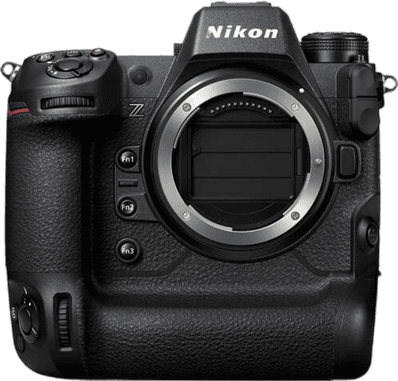



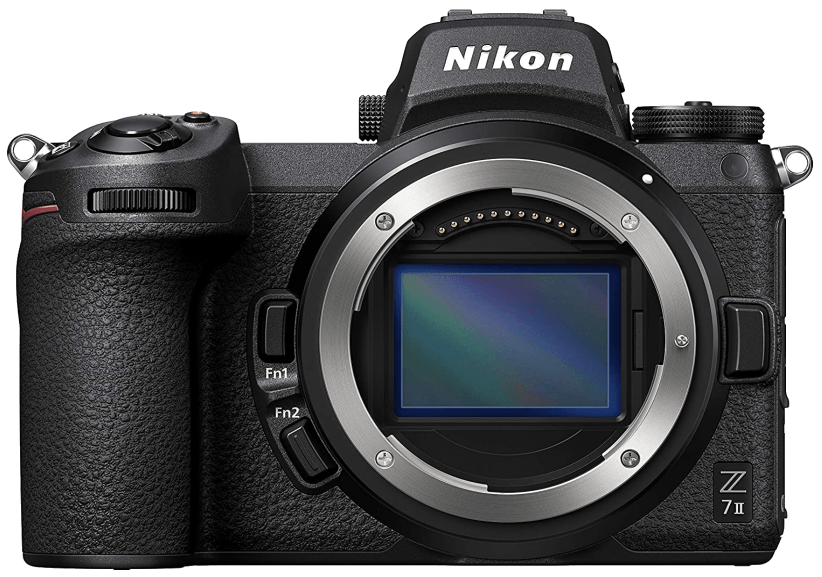

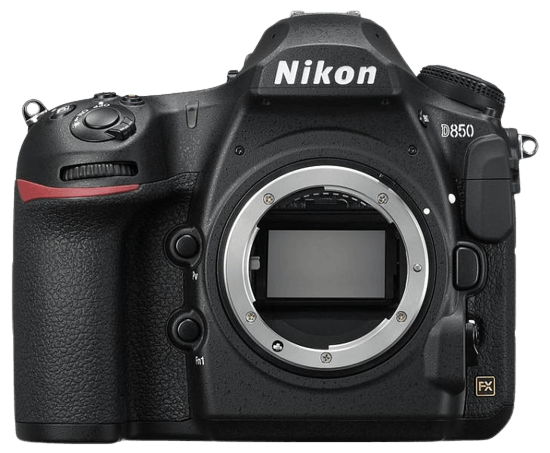

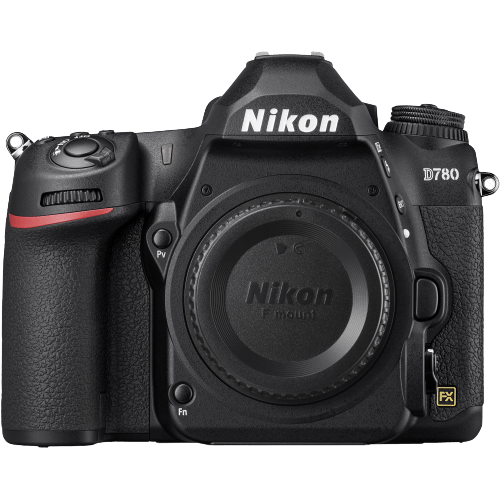



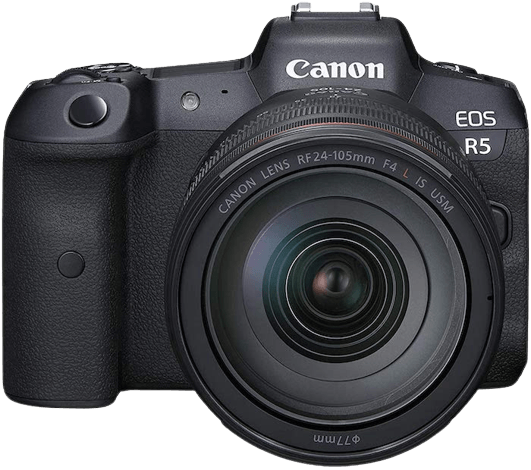



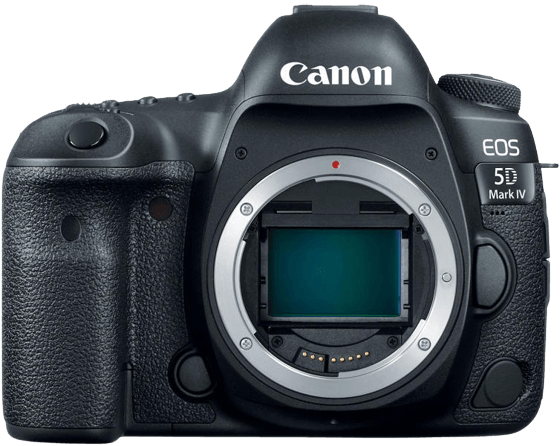

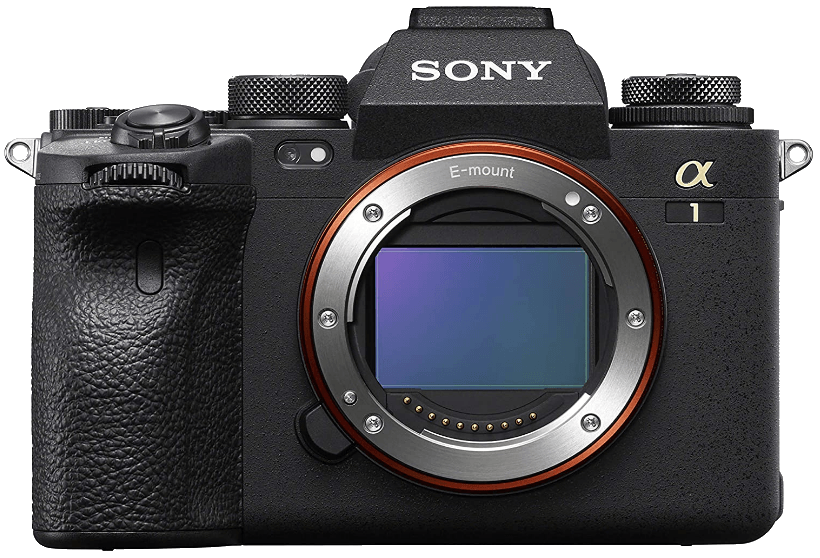

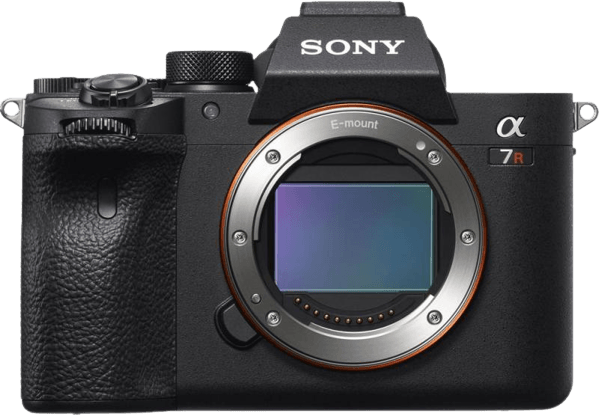

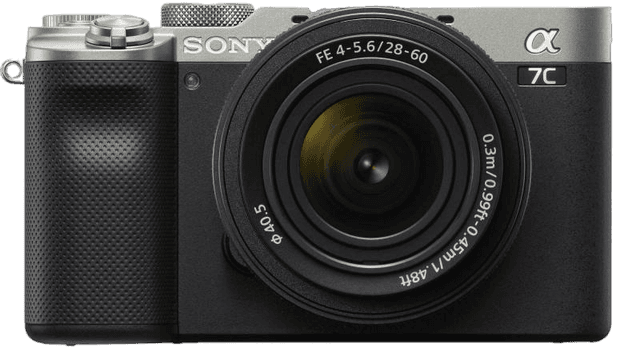

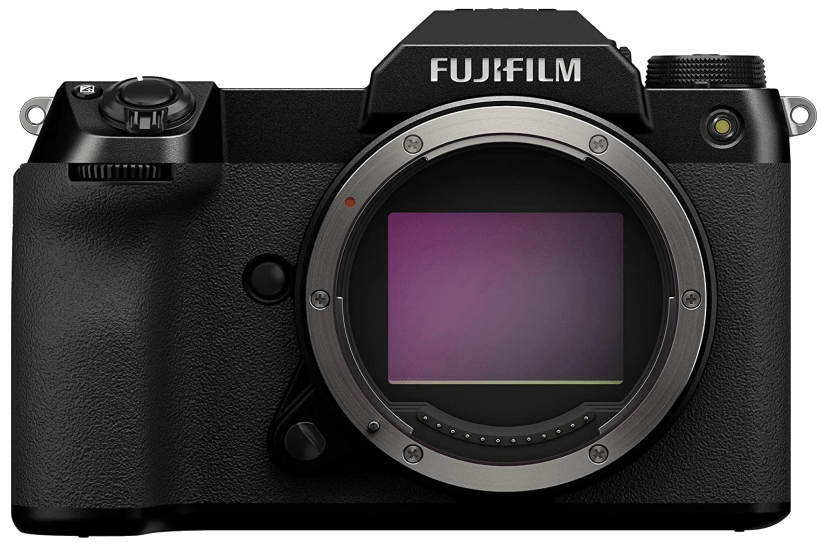

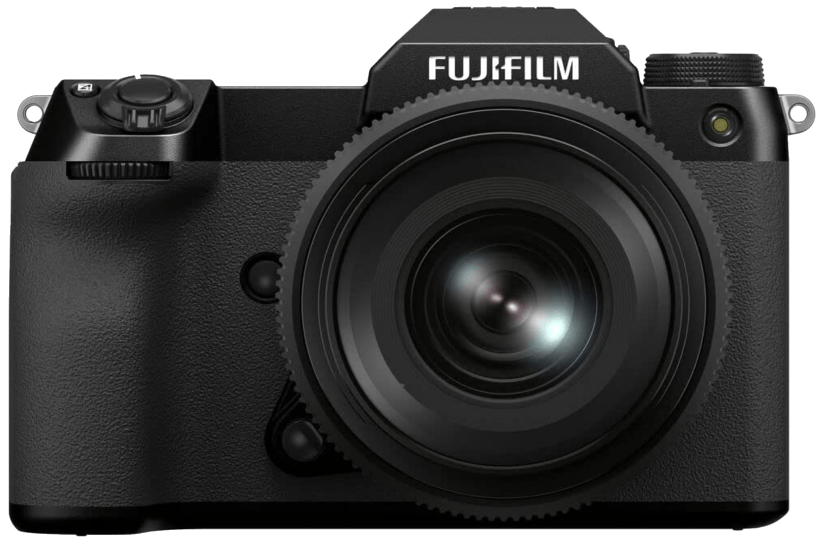

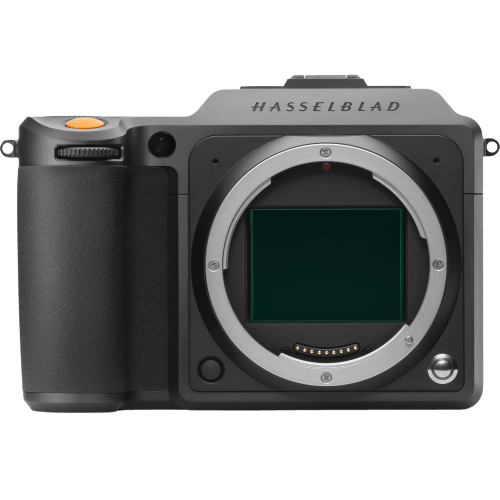



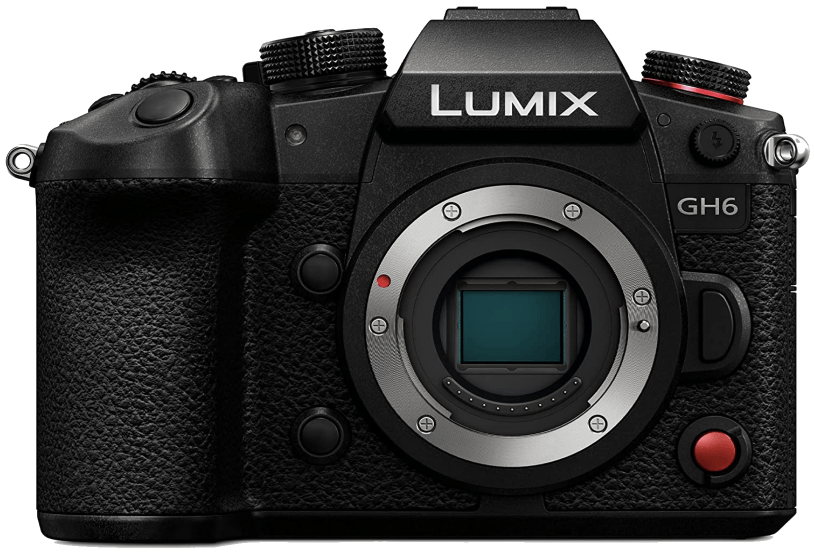

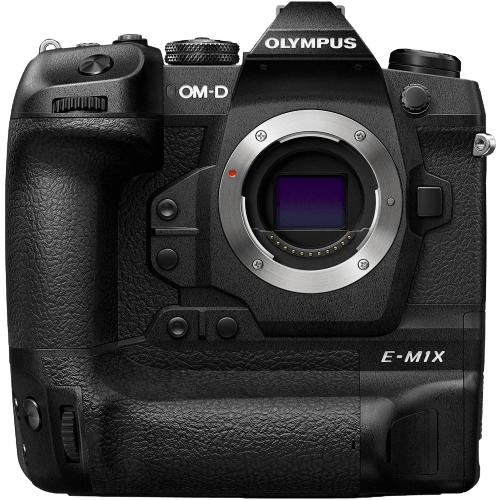




















































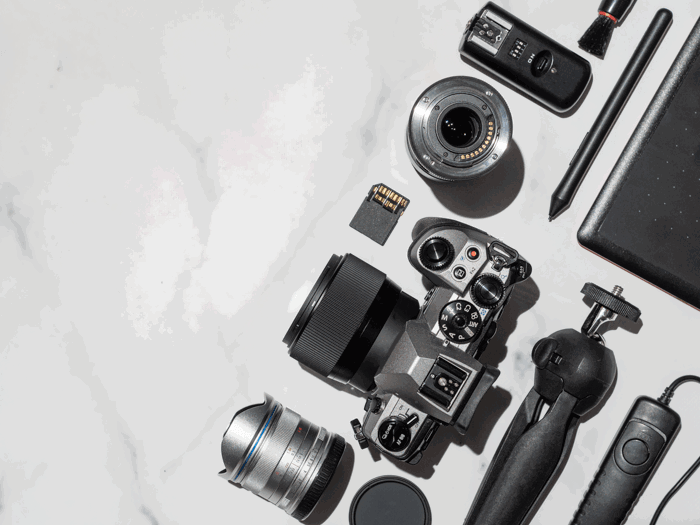
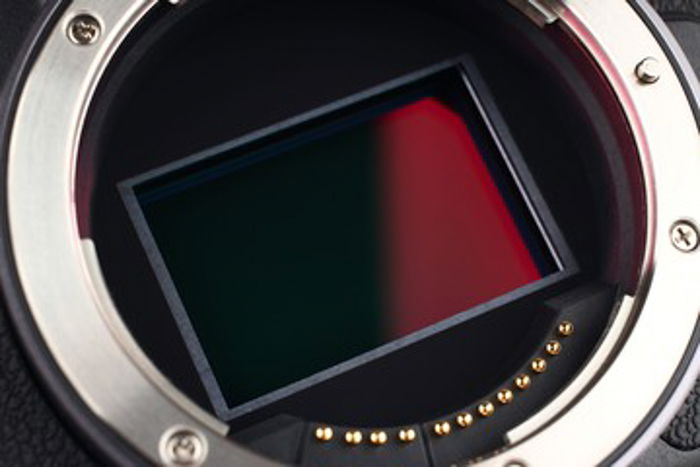
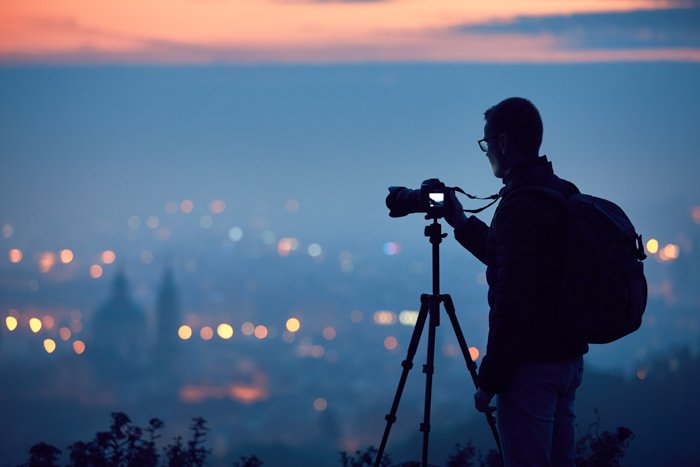
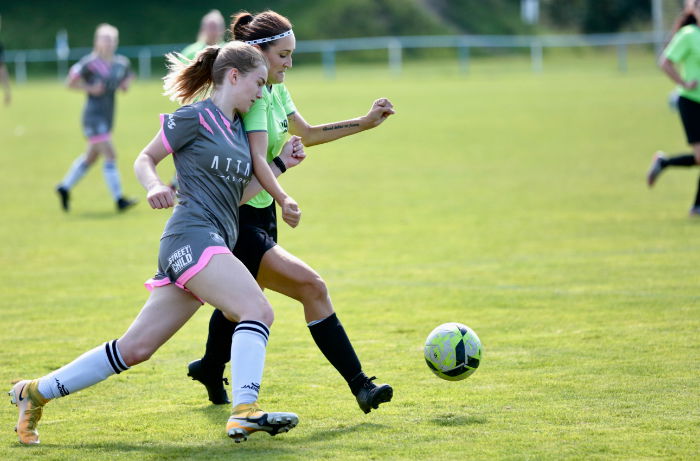


title: “The 17 Best Cameras For Professional Photography In 2023” ShowToc: true date: “2023-01-12” author: “Zachary Androlewicz”
So what’s the best approach to buying a new camera? Research, of course! So we’ve done that for you. And to help you, we compiled the best cameras for professional photography. so you can find the best option that meets your needs! The Nikon Z9 is our top pick. It has rock-solid performance, incredible AF, and some of the best lens options in the world. [Note: ExpertPhotography is supported by readers. Product links on ExpertPhotography are referral links. If you use one of these and buy something, we make a little bit of money. Need more info? See how it all works here.]
What is the Best Camera for Professional Photography?
Here’s our list of the 17 best cameras for professional photography. We provide an excellent range of camera brands in no particular order. There’s a mix of the best DSLR cameras and full frame mirrorless cameras with various sensor types. We also list a few general specs for you to consider. (You can jump to our buying guide at the end if you need more details on what camera features to look for.) Let’s have a look at those cameras in more detail, starting with our top pick, the Nikon Z9. Nikon has struggled for years to compete in the mirrorless world with Sony and Canon. Those two companies had a head start with mirrorless cameras. That’s why the Nikon Z9 is surprising to many. Nikon’s newest flagship professional camera blows the competition out of the water. The Z9 has groundbreaking features and image quality! So what makes the Z9 the best professional camera? Let’s start with the frame rate. Not long ago, many thought 24 fps was impressive. But the Z9 can shoot a whopping 120 fps in still photos. With autofocus, Nikon developed a deep learning algorithm. It tracks various subjects, from people and animals to vehicles. It even combines 3D tracking and subject detection, automatically following fast-moving objects. Of course, the Nikon Z9 is also a competent professional camera for video. It has a max video resolution of 8K. And what’s even more impressive? It can shoot 12-bit RAW footage in-camera without overheating. Its footage is so crisp that you can grab 33 MP still frames from it. The downside of the Z9 is that it’s a little bit on the bulky side. The body alone is 2.9 pounds. That’s a lot of weight considering it’s a full frame mirrorless camera. But then again, its robust build makes it a formidable professional camera. It can brave the elements well with its weather sealing. The Nikon Z7 II is the successor of the groundbreaking Z7, which Nikon released in 2018. The Z7 was an impressive mirrorless camera. It had a few inadequacies that some professional photographers didn’t like. For instance, it didn’t have a dual card slot. That would have allowed photographers to back up their files in-camera. Thankfully, Nikon listened to the consumers and addressed the inadequacies of the Z7. Now, the Z7 II has a dual card slot and boasts 4K / 60p video, albeit still cropped. This full frame mirrorless camera also allows accurate eye-tracking in video mode. This makes it a favorite among run-and-gun filmmakers. Of course, Nikon didn’t stop with the dual card slots and the 1.08x crop 4K. The Z7 II lets you combine up to ten multiple exposures into a single frame in-camera. And can go the traditional route of long exposure photography. It lets you keep the shutter open for up to 900 seconds for a single shot. You’ll also enjoy the Z7 II’s focus shift shooting if you’re into macro photography. It takes several photos and automatically adjusts focus incrementally each time. You can then edit and combine them into one sharp image from the foreground to the background. Most people these days dismiss DSLR cameras in favor of mirrorless options. But some photographers still love using an optical viewfinder. And others don’t want to sacrifice performance and quality. If you’re one of those people, you need to look at the Nikon D850. Nikon released this iconic DSLR camera in 2018. But it remains one of the best non-mirrorless options for professionals. It only has a mechanical viewing system. But it has features that make it highly competitive with high-end mirrorless cameras. First, the D850 has an excellent 45.7 MP resolution. That places it on the level with the Nikon Z7 II and the Z9. Its backside illuminated sensor lets you shoot in low light with minimal noise. It also doesn’t have a low-pass filter, allowing you to create tack-sharp images. Unlike the Nikon Z7 II that was released in 2020, the D850 can capture 4K video without a crop. Unfortunately, its autofocus in video mode is a bit slow. But if you like focusing manually, you wouldn’t have to worry about its slow autofocus in the first place. One true advantage of the D850 over mirrorless cameras is that it can accept older lenses without needing an adapter. Do you want a newer camera but don’t want to replace your DSLR glass? This professional camera is the most logical choice. We know that DSLR cameras are starting to feel a bit passe. But forget that the D850 has no optical viewfinder for a second. It’s still a capable camera. And it can beat most modern cameras when it comes to image quality. The Nikon D780 is a bit of an anomaly. Nikon’s competitors were releasing new mirrorless cameras in 2020. And the Japanese camera company decided to launch this full frame DSLR camera body. It may seem illogical for Nikon to have done that. But read on to find out why you might find this excellent camera indispensable. The Nikon D780 is the updated version of the much-loved Nikon D750 that was released in 2014. On the surface, it seems like a regular entry-level full frame camera. It has a standard 24 MP sensor. But the Nikon D780 is, in fact, a hybrid camera that has improved autofocus for video. If you own a DSLR, especially a Nikon one, you know how unusable the autofocus is when shooting video. It hunts for the subject a lot, and the transition from one focus point to the next is jerky. The Nikon D780 allows you to focus accurately and smoothly as if using a mirrorless camera. And the best part about it is that you can work with your existing DSLR lenses to use it. The D780 has upgraded video capabilities. But besides that, it has many photography features for the modern pro photographer. For instance, it has built-in creative filters. This includes a tilt-shift effect. Plus, it lets you combine many exposures in-camera. It also lets you create focus-stacking shots. That lets you create sharp photos from the background to the foreground. So what is the Nikon D780 for, then? It’s designed for professional photographers and serious enthusiasts. It’s for those who love the experience of a DSLR but long for the autofocus capabilities of mirrorless options. It may seem simple at first glance, but it’s proof that DSLR cameras still have plenty to offer. Canon cameras have long been a favorite among photojournalists, wildlife, and sports photographers. That’s due to their performance even in high-stress environments. The brand’s mirrorless camera release, the EOS R3, continues that tradition. But it has new features that make shooting photos faster and more intuitive. The Canon EOS R3 has an impressive 1,053 autofocus points. It can accurately detect all subjects, from humans to animals. It also has an Eye Control AF. It automatically selects the focus points by following your eye movements! Surprisingly enough, the Eye Control AF technology has been around since 1998. And it was available in some high-end film cameras. But this is the first time Canon has integrated it into a digital camera. We wonder why it took that long. But we’re excited about its potential. It makes changing focus hands-free and more intuitive. The Canon EOS R3 has 5-axis in-body image stabilization (IBIS). It steadies your camera while taking photos at low shutter speeds. This feature is perfect for those who always work in terrible lighting conditions. They can be photojournalists or even event photographers. When it comes to continuous shooting, using a mechanical shutter, the Canon EOS R3 can take 12 fps. And it takes up to 30 fps electronically. But, it can fire up to 195 frames in custom mode, beating Nikon’s Z9’s impressive 120 fps. Of course, we can’t forget this camera’s video features. It’s the perfect hybrid camera, capable of shooting 60 fps in 6K and 120 fps in 4K. And unlike most mirrorless options, the R3 has a suppressed rolling shutter distortion. It significantly reduces the “Jell-O effect” when capturing fast movements. Unfortunately, the EOS R3 only has a 24 MP sensor. Most of its competitors’ offerings feature at least double the resolution. But despite that, the R3’s excellent features can still outperform other options. For those needing a high-resolution camera, the Canon EOS R5 is a better option than the R3. It boasts a 45 MP sensor which is almost twice as large as its R3 counterpart. It also has most of the features of the R3 but at a fraction of the size, weight, and price. Like the R3, the Canon EOS R5 has an advanced focusing system. It can automatically track both fast-moving humans and animals. And it also has 1,053 autofocus zones that cover your entire shooting area. The Canon EOS R5 can take 12 fps with a mechanical shutter. But you can go up to 20 fps using the electronic shutter, which also allows you to shoot silently. What makes the R5 genuinely shine is its video capabilities. It has a max video resolution of 8K uncropped for up to 29.97p. In 4K mode, it can shoot up to 120p for capturing slow-motion footage. Are you a sports or wildlife photographer who requires shooting fast? The EOS R5 may be the best professional camera for you. Despite being more expensive, the Canon EOS R3 doesn’t have plenty of advantages over the R5. And when it comes to the video department, the R5 even outshines the R3. Are you a freshly minted professional photographer? Do you need a reliable full frame mirrorless camera? Consider the Canon EOS R. Canon released it in 2018. But its features are still competitive with the newest releases. The Canon EOS R is the first camera in the R line. It won many professional photographers’ hearts upon its release. This impressive device has a 30 MP sensor with an ISO sensitivity range between 100 and 40,000. So it produces great image quality and works well in low light. It features 5,655 AF points covering 100 percent of the vertical and 88 percent of the horizontal. One of the Canon EOS R’s unique features? It allows you to drag the focus point across the screen to let the camera know where it should focus next. That’s a helpful solution if you photograph difficult-to-track, fast-moving subjects. The Canon EOS R’s max video resolution is 4K at 29.97p. But it also lets you record at 60 frames in Full HD (1920 x 1080). Sure, it doesn’t have the best specs when it comes to video. But if you don’t use slow-motion shots all the time, what this device offers is still impressive. Oh, and did we tell you that it allows you to record video simultaneously while taking pictures? Now that’s one convenient function we all wish every camera had. Apart from all its features, its affordability makes the Canon EOS R a true gem. You can save some money by buying this camera. Then you can now invest that in the high-quality Canon lenses you need for various occasions! In the golden days of DSLR cameras, photographers considered the EOS 5D line one of the best on the market. The original 5D, even now, is a highly sought-after “classic” camera. That’s due to the film-like images it produces. But the 5D Mark II has also become popular for its impeccable video performance. It’s a favorite among indie filmmakers. The Canon EOS 5D Mark IV is the latest iteration of the 5D lineup. It improves the legacy of its predecessors with updated features. Canon released it in 2016. But it remains one of Canon’s most popular professional cameras. So what makes the 5D Mark IV any good? First, if you have older Canon lenses, all are compatible with the 5D Mark IV. Of course, we can’t forget its optical viewfinder. It allows for flicker-free and lag-free shooting. The Canon EOS 5D Mark IV’s resolution can still go head-to-head with most of the cameras featured on this list. It has a 30 MP sensor with an ISO sensitivity between 100 and 32,000. And the ISO is expandable to between 50 and 104,200. For video, this camera can shoot 4K up to 30p with a 1.74x crop. You can bump the frame rate to 60p if you’re shooting Full HD video. And at 720, you can go super slow-motion at 120p. Canon has recently announced it will wind down its development of DSLR cameras. So perhaps this will be your last chance to get your hands on one of the last 5Ds on the market. But forget about bittersweet nostalgia with DSLRs. Look at the specs. This camera can fulfill any professional photographer’s need! Sony has been a leader in mirrorless professional cameras for years. And the Sony a1 is a culmination of the brand’s imaging technology prowess. The a1 is a high-performance workhorse packed with features. It makes shooting in any situation a breeze. It’s easy to capture anything from creative portraits of people to pets and animals in the wild. Sony a1 has a 50 MP sensor. It has an ISO range between 50 and 104,000. This device even features Pixel Shift Multi-Shooting. It lets you combine 16 RAW files to create one super high-resolution image. The only other options on this list that has a similar functionality? The Fujifilm medium format cameras. You can shoot continuously with the Sony a up to 30 fps. That’s pretty impressive! It’s a high-resolution sensor that has to process large files quickly. That’s why sports and wildlife photographers love it. They can finally take pictures fast. And they can crop their shots in post without worrying about losing image quality. The Sony Alpha 1’s max video resolution is 8K at 30p without crop and 120p in 4K. Sony has one of the fastest autofocus systems on the market. The a1 can make up to 120 AF and autoexposure calculations per second. It ensures you don’t miss crucial moments. The Sony Alpha 1’s max video resolution is 8K at 30p without crop and 120p in 4K. Those who use autofocus for video will be happy. You can track your subject’s eyes in real time and change the focus seamlessly. The Sony a1 is more than a thousand dollars more expensive than the Nikon Z9, its closest competitor. But the 50 MP resolution, high dynamic range, and accurate autofocus system make it all worth it! Is the Sony a1 too expensive for you? Don’t worry because you have a competitive alternative in the form of the a7R IV. It’s not only significantly cheaper. It also has a 61 MP resolution, which is currently the highest for any full frame mirrorless option. Like the a1, the a7R IV also has Pixel Shift Multi-Shooting. After combining 16 RAW files using this feature, you end up with one large image that exceeds 200 MP. This is incredible image quality from the Pixel Shift functionality. It makes the a7R IV perfect for those who love creating large prints from their photos. The Sony a7R IV can shoot only 10 fps instead of the a1’s 30 fps. But in most shooting situations, 10 fps is more than adequate to capture crucial moments. It also has 567 autofocus points. And it uses phase detection for accurate focusing even when shooting fast subjects. The Sony a7R IV doesn’t have 8K. But it has excellent 4K capability that lets it record 24, 25, and 30p. At Full HD (1920 x 1080), it can capture slow motion up to 120p. If you don’t need a specialty camera like the Sony a1, the a7R IV is a solid investment. The image quality from its 60 MP sensor makes a lot of difference. That’s especially true if you love capturing intricate details in photos. Sony offers tons of mirrorless options for a wide range of photographers. Of course, it has its flagship a1 for professional photography. But it also has the Sony a6600 for beginners and enthusiasts. But what if you’re an enthusiast ready to dive into the professional world? Well, Sony still has you covered with the a7C. Technically, Sony built the a7C for content creators. They designed a more user-friendly package for those who create high-quality videos. But this all-around camera can go beyond the requirements of its target market. It can go head-to-head with other professional options. Sony calls the a7C “the smallest and lightest full frame camera.” Even though it has a large sensor, they designed its camera body like an APS-C camera. That way, it doesn’t feel too intimidating to most content creators. (Many content creators are used to using crop-sensor cameras.) Despite the target market of the a7C, it has all the features you need for professional photography. It has a resolution of 24.2 MP and can shoot up to 10 fps. This is fast for this type of camera. The Sony a7C also has real-life auto-tracking. So you don’t have to worry about missing focus on moving subjects. Its autofocus system tracks the eyes of humans and animals. So you can keep shooting without fumbling with your focus button. The a7C features a 4K video with no crop! Perfect for content creators! And it can record up to 30p. In HD mode, it can capture slow motion up to 120p. And, of course, it has a vari-angle monitor to make it easy to shoot both selfies at low-angle and high-angle shots. But what makes the a7C genuinely appealing is the price. Its affordability makes it perfect for anyone who wants to switch from APS-C to full frame. Its user-friendly configuration doesn’t make it too intimidating. And its state-of-the-art features make it ideal for professional use. Companies like Hasselblad and Phase One have sold medium format cameras for a while. But then Fujifilm entered the medium format market. So regular photographers finally got access to more affordable medium format options. One of the truly spectacular offerings from Fujifilm is the GFX 100S. The 100 refers to its 102 MP medium format sensor. Its high-resolution image quality makes it perfect for professional commercial photographers. And it’s excellent for anyone doing large-format print work. It’s also ideal for landscape photographers that need sharp details in their photos. The GFX 100S is even more impressive because it’s relatively affordable. It’s a medium format and has a 102 MP resolution. But it only costs as much as any other 35mm flagship DSLR and mirrorless options. Compare that to the Hasselblad H6D, which costs about $32,000! With all GFX 100S’s beefy features, you’d think it’s bulky. But it’s surprisingly slim for a medium format camera. It houses a large sensor. But it’s barely any larger than a full frame option such as the Nikon Z9 or the Canon EOS R3. The GFX 100s also offers stunning 4K video with the creamiest bokeh thanks to the large sensor. But the autofocus doesn’t perform as well as regular mirrorless options—especially in video mode. Its autofocus system is pretty accurate. But it takes time to shift focus which can be frustrating. But who buys a medium format camera for video work anyway? The GFX 100s was always meant for slow photography work. Do you earn money creating landscapes or commercial studio work? If so, consider getting this camera despite its lukewarm video functionality. If the high resolution of the GFX 100S is a bit overkill for you, then you may find the GFX 50S II to be a better alternative. It’s also a medium format at a fraction of the cost (and resolution). But who’s counting? Most photographers never need a professional camera with 100 MP of resolution. In most cases, a camera like the GFX 50s II with 51.4 MP is more than adequate even for commercial use. Like the GFX 100S, the GFX 50S II is also a relatively compact camera. You can use it in the streets like any regular mirrorless camera. It also has 6.5 stops of in-body image stabilization (IBIS). This allows you to work sans tripod in low-light conditions. Furthermore, the GFX 50S II boasts what Fujifilm calls Pixel-Shift Multi-Shot. It’s a fancy term. It describes how the camera can stack 16 RAW frames into a tack-sharp 200 MP file. This feature makes this camera one of the best devices to use for archival purposes. Unfortunately, the GFX 50S II isn’t a foolproof machine. It isn’t the best professional camera to use if you’re a hybrid shooter who switches from photos to videos. Its max video resolution is 1920 x 1080. And its frame rate can only go up to 30p. But if you’re one of the few people left entirely dedicated to still photography, the GFX 50S II is a steal. Currently, it’s about the same price as most mid-level full frame cameras. Nobody would have thought such an idea of a cheap medium format would be possible just a decade ago! Hasselblad was the first to release a mirrorless, medium format camera in 2016—the X1D. And in 2020, they updated their medium format line. They released the X1D II 50c. And it has features fit for a new generation of professional photographers. The X1D II 50c has a sleek, well-built body that makes it perfect for studio photography and street photography. Despite the large sensor it carries, it only weighs 650 grams. And it’s only slightly larger than the largest mirrorless and DSLRs out there. The X1D may be a Hasselblad. But it’s surprisingly affordable for a professional camera of this caliber. It’s slightly more expensive than 35mm flagship cameras. But it’s still within reach for more people (unlike the $32,000 H6D-100c). Most medium-format cameras appear awkward and bulky. But you can tell right away that the X1D II was meticulously designed. It has a smooth, ergonomic body with buttons in the right places. It even features a pop-up dial that you can conveniently push down when not in use. Being a medium format camera, the X1D II feels slightly clunky compared to full frame 35mm options. Its continuous shooting rate alone is quite dismal at 2.5 fps. Meanwhile, its max video resolution is only 2.5K. But the Hasselblad X1D II was never meant for run-and-gun shutterbugs anyway. It’s for commercial photographers and fine art photographers. It’s for those who take their time to take a single photograph. Like its meticulous design, it requires a user who is as detail-oriented with their images. In my opinion, the Hasselblad 907X 50c is arguably one of the best-looking cameras of all time. Its simple, boxy design is reminiscent of the classic Hasselblads like the 500c or the 200FE. It even comes with stylish chrome parts. They fashionably set it apart from the other professional cameras on the market. What truly sets the 907X 50c apart from the competition is that it comes in two parts. The first is the 907X—the body. The second is the CFV II 50C—the digital back. You can detach the CFV II digital back to the 907X body. And you can attach it to older Hasselblad film cameras to convert them into digital cameras. Now that alone is enough reason for you to save up and buy this cutting-edge gadget. But how is the 907X as a standalone mirrorless camera? It’s a medium format Hasselblad with a 50 MP resolution. So you can be confident that it delivers some of the best image quality for any camera. You can view its stunning shots on a large 3.2-inch touchscreen. And you can even tilt it up and use it as a waist-level “viewfinder.” One of the issues of the 907X’s boxy design is that it’s not the most ergonomic. Following the legacy of older Hasselblads, the 907X’s shutter button is also in front of the body. That button placement completes the classic look. But it makes it so awkward to hold. Thankfully, you can buy a handgrip as an accessory if you want it to be easier on the hands. The problem? You have to spend extra money on an already expensive system. But are you a studio photographer already working with a film Hasselblad? If so, the 907X is still worth considering. You can turn your analog camera into a digital one! That should be compelling enough to convince you it’s worth the investment. So far, we have featured medium format and full frame cameras in this article. So you may find it strange to see a Micro Four Thirds camera on this list. But the Panasonic Lumix GH6 is such an advanced camera that it’s not fair not to include it at all. The GH series is mainly known for its video capabilities, and the GH6 continues to build upon that legacy. The max video resolution of this camera is only 5.7K, as opposed to some options on this list that can go up to 8K. But despite having the lower video resolution, the GH6 can record up to 60p at 5.7K and 20p at DCI (cinema-quality) 4K. And once you go down to HD (1080), you can shoot super slow-motion video at 300p. Even some of the most expensive full frame options can’t do that. Enough about its video capabilities. How about still photos? The GH6 may have a tiny sensor. But that doesn’t mean it’s not capable of capturing professional-quality images. Its best feature? It can combine eight shots into one high-resolution 100 MP file. The GH6 can capture up to 8 fps using a mechanical shutter. But once you switch the electronic shutter, it can take photos up to 75 fps. Now that’s quite a punch for a small camera! It’s perfect for action shots. The Olympus OM-D E-M1X is another outlier on this list. It has a robust body. So you know immediately that the M1X is a legitimate professional camera. It also features a weather-sealed body and a vertical grip. And inside, it has a small yet powerful Micro Four Thirds sensor. And it produces high-quality images that rival that of larger sensors. Mind you, the OM-D E-M1X’s body is still relatively large. But it’s not as gigantic and heavy as the Nikon Z9 or the Canon R3. And since it has a smaller sensor, the lenses it requires aren’t as long as its full frame counterparts. The OM-D E-M1X can shoot up to 8 fps using a mechanical shutter. But it can capture up to 18 fps with an electronic shutter. It also features face and eye detection. You’ll find it helpful when you’re taking portrait photos at such a fast rate. With video specs, the OM-D E-M1X offers crisp 4K footage up to 30p and 120p in Full HD (1080). Sure, other cameras provide the same features too. But video isn’t this camera’s main selling point. But it can still compete with more expensive cameras in capturing cinema-quality footage. Apart from all the photo and video features of the Olympus OM-D E-M1X, its true strength comes from its price. It’s indeed one of the most expensive Micro Four Thirds cameras out there. But it’s also one of the cheapest flagship professional cameras. It only costs a third of the flagship offerings from Canon, Sony, and Nikon! So if you’re on the market for a rugged photography workhorse for cheap, this is it.
Buyer’s Guide for the Best Camera for Professional Photography
So how much do professional cameras cost? Our list ranges in price from hundreds to thousands of dollars. Even if you don’t have a limited budget, you shouldn’t necessarily buy the most expensive camera. It may not even be the best professional camera. You need to look more into what a camera can do based on the type of professional photography you do. You must be even more discerning with a camera’s capabilities if you have a limited budget. Cheaper cameras tend to have fewer features. And you must know if the option you like has all the functionalities you need.
Features of the Best Camera for Professional Photography
So what factors do you need to consider when buying the best professional camera for you in? We’ve listed a few below that you need to focus on.
Sensor Size
Professional cameras’ most common sensor sizes are typically medium and full frame formats. The main reason working photographers love them is because of their large size. Since they’re bigger, they let in more light. So they suffer less from image noise. Larger sensors also have more space. So all those pixels can convert light energy into digital signals. It results in more detailed images with even less noise. But it doesn’t mean you should only get medium and full frame cameras for professional work. There are a few professional-grade options. They are in smaller APS-C and Micro Four Thirds formats. We even included two Micro Four Thirds cameras on our list! We suggest getting a medium or full frame camera if you always work with printed images. Large sensor sizes allow you to create large prints in great detail. Are you a run-and-gun photographer whose work is mainly published digitally? If so, a small-sensor camera will be more than adequate for your needs. Some agencies, particuarly in food and real estate, will have full frame as a minimum equipment requirement before signing you on. So it is worth researching carefully.
ISO Performance
Another factor you need to take into consideration is ISO performance. Most cameras these days can go up to 25,000 or even 50,000. But in reality, nobody uses a photo taken with a 25,000 or 50,000 ISO. All that image noise from such a high ISO level makes files unusable. The real question you need to ask? How high can you go with your ISO without the image noise becoming too distracting? Most cameras today with ISOs of 50,000 can only realistically produce usable images up to 6,400. So if there’s a camera that can create clean images beyond that level, you know you have a great camera in your hands. One of them is the Canon R3. But that doesn’t necessarily mean a camera that can only produce clean images up to 6,400 isn’t a good choice. That ISO level is already considerably high. In contrast, regular beginner-level options can only go up to 3,200 at best. My point is that the higher the usable ISO level of your device, the better its image quality.
Image Resolution
Don’t overthink the resolution when you’re looking for a new camera. In most cases, a 12 MP camera is more than enough for most professional work. You can produce magnificent magazine images with such small resolutions. Knowing that most cameras on this list have at least 24 MP sensors means you already have more than you need. In most cases, getting a higher-resolution camera is not necessary. You only need it if you need to print your work in large sizes. The 60 MP Sony a1 is a good option for this. The large sensor is also helpful if you regularly crop images significantly. One example is bird and wildlife photography.
Burst Rate
It’s fun to have a fast camera. But buying an option with a quicker frame rate typically comes at a higher price. So ask yourself what type of photography you intend to use your camera. Do you need to shoot that many photos in one go? Are you doing fashion photography or stylish portrait photography where models pose slowly? If so, you can get away with a camera such as the Hasselblad 907X that shoots only 2.5 fps. Are you a sports photographer who needs to capture every moment of a fast-moving subject? Then you need to have a fast 120 fps burst mode that a camera like the Nikon Z9 offers.
Max Video Resolution
But if you’re a hybrid shooter who works with photos and video, you should at least get a video with 4K capabilities. Even if you’re exporting your video as 1080p, it would still be nice to shoot in 4K. It’s good to know you have a lot of wiggle room for editing and cropping your file. It makes a photo shoot less stressful!
Conclusion
So what is the best camera for professional photography? Our top choice is the Nikon Z9. That’s because it performs very well whether you’re taking photos or recording videos.It also has all the features that many users will find helpful. All professionals, from sports photographers to portrait photographers, can use it.




























































































